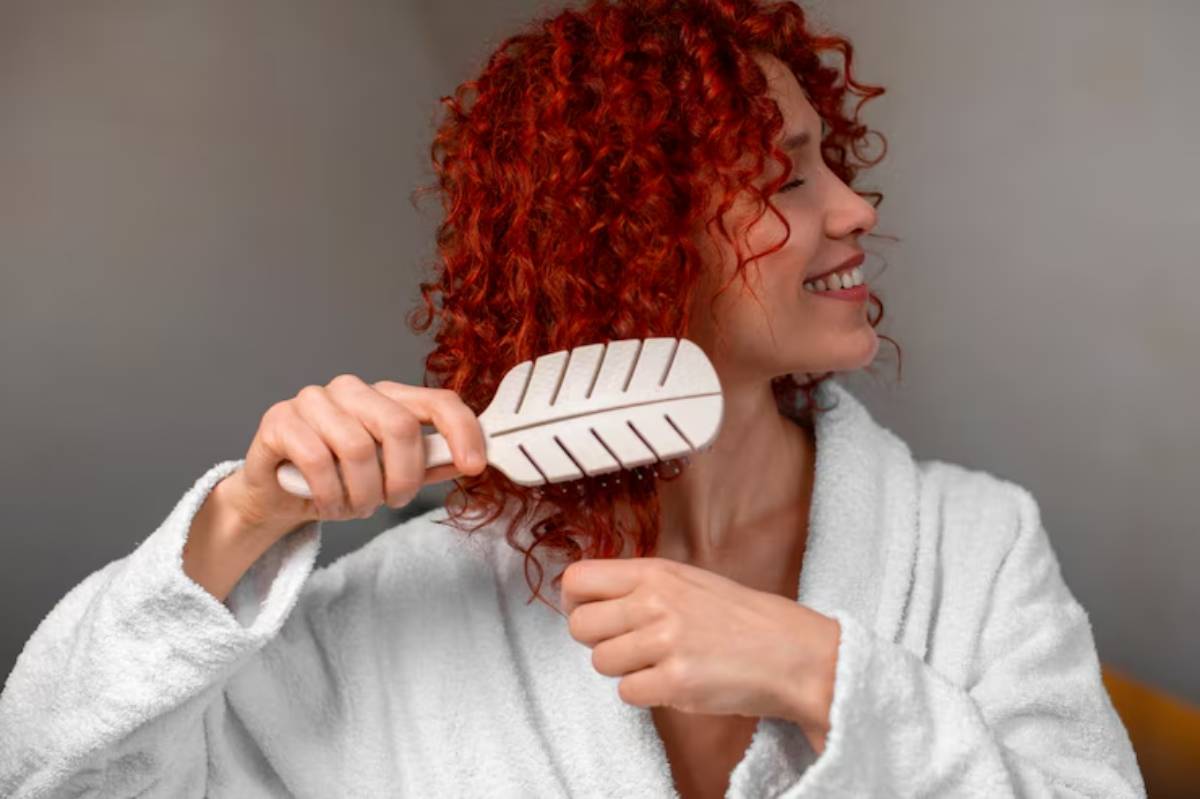
How to Detangle Curly Hair Without Damage
Curly hair is beautiful, unique, and expressive — but let’s be honest: detangling it can feel like navigating a jungle of knots and frizz. One wrong move, and you’re looking at breakage, pain, and a ruined curl pattern. Sound familiar?
You’re not alone. Learning to detangle curly hair gently and effectively is a rite of passage in any curly girl’s (or guy’s) journey. The good news? With the right techniques, tools, and products, you can glide through tangles without sacrificing length or definition. This comprehensive guide is your trusted roadmap to damage-free detangling.
Understanding the Core: Why Curly Hair Needs Special Detangling

Curly hair is naturally drier and more fragile than straight hair. Its coiled structure makes it harder for scalp oils to travel down the hair shaft, leading to dryness, tangles, and split ends. That’s why detangling curly hair isn’t just a step — it’s a full-on care ritual.
Detangling improperly, such as yanking a brush through dry curls — leads to:
- Hair breakage and split ends
- Weakened curl patterns
- Excessive shedding
- Increased frizz
According to a 2022 study published in the International Journal of Trichology, physical manipulation is one of the leading contributors to mechanical damage in textured hair types. Gentle detangling, therefore, is more than aesthetic — it’s protective.
Quick Guide: Safe Detangling at a Glance
Checklist at a Glance
- Always detangle when hair is wet or damp with product
- Use a wide-tooth comb or detangling brush, not a fine-tooth comb
- Work in small sections, from ends to roots
- Use a slippery conditioner or detangling product
- Be patient — never rush or yank through tangles
- Finger detangle if needed to preserve curl integrity
- Follow up with a moisturiser and protective style
Step-by-Step Guide: How to Detangle Curly Hair Without Damage
1. Start with Hydration
Why it matters: Dry hair snaps easily. Water softens curls and helps loosen knots.
- Mist your hair thoroughly with water or a water-based spray.
- If you’re in the shower, saturate your curls completely.
Important Note: Never detangle curly hair while completely dry — it causes snapping and damage.
2. Apply a Detangling Product
Use a rich conditioner, leave-in, or a specific detangler with slip (i.e., it makes strands slippery).
Look for ingredients like:
- Slippery elm
- Marshmallow root
- Aloe vera
- Behentrimonium methosulfate (gentle detangling agent)
Pro Tip: Choose products free from silicones, parabens, and drying alcohols for healthier curls long-term.
3. Section Your Hair
Divide your hair into 4–8 sections depending on its thickness and length. Use clips to keep sections separate.
Important Note: Smaller sections make detangling gentler and more precise.
4. Detangle from Ends to Roots
Using a wide-tooth comb or a detangling brush, start at the ends and slowly work upward toward the roots.
- Hold each section at the base to prevent tugging on the scalp.
- Use short strokes — never pull all the way from root to tip in one motion.
Pro Tip: Brushes like the Tangle Teezer or Felicia Leatherwood Detangler Brush are curly-community favourites.
5. Use Fingers for Tough Knots

Your fingers are the gentlest tools. For stubborn tangles:
- Apply extra product
- Gently pull strands apart — don’t rip through
Important Note: If a knot won’t budge, trim it. It’s better than tearing your hair.
6. Rinse with Cool Water
Once you’ve finished detangling:
- Rinse out the product (if needed) with cool water
- This seals the cuticle and reduces frizz
Best Practices & Additional Insights
- Consistency is key: Detangle every wash day or every few days if your curls tangle easily.
- Satin is your friend: Sleep on a satin pillowcase or wear a bonnet to prevent overnight knots.
- Avoid product overload: Too much product can lead to build-up, making detangling harder over time.
- Know your curl type: 3A curls might only need a light leave-in, while 4C coils may need thicker creams for slip.
Real-World Analogy
Think of your curls like a delicate necklace chain — if you yank on a knot, you might break it. But with patience, care, and the right touch, you can smooth things out without harm.
FAQs
- How often should I detangle curly hair?
Most people benefit from detangling every wash day — typically once or twice per week. Daily detangling can cause excessive breakage. - Can I detangle my hair dry?
Detangling dry is not recommended for curly textures. Always detangle when your hair is wet or damp with product. - What’s the best tool to use for detangling?
A wide-tooth comb, detangling brush with flexible bristles, or your fingers work best. Avoid fine-tooth combs. - What if my hair knots easily overnight?
Use a satin bonnet or braid your hair into loose twists before bed to prevent tangles. - Can detangling help with hair growth?
Indirectly, yes. Gentle detangling prevents breakage, allowing your hair to retain length and stay healthy.
Conclusion
Detangling curly hair doesn’t have to be a dreaded, painful chore. With patience, the right tools, and nourishing products, you can transform it into a gentle, restorative part of your curl care ritual. Remember, each tangle is a chance to learn about your hair’s needs and to build a deeper relationship with your natural texture.
Start today by taking a gentle, intentional approach to detangling—your curls will thank you. If you found this helpful, share it with a curly friend or bookmark it for your next wash day.


